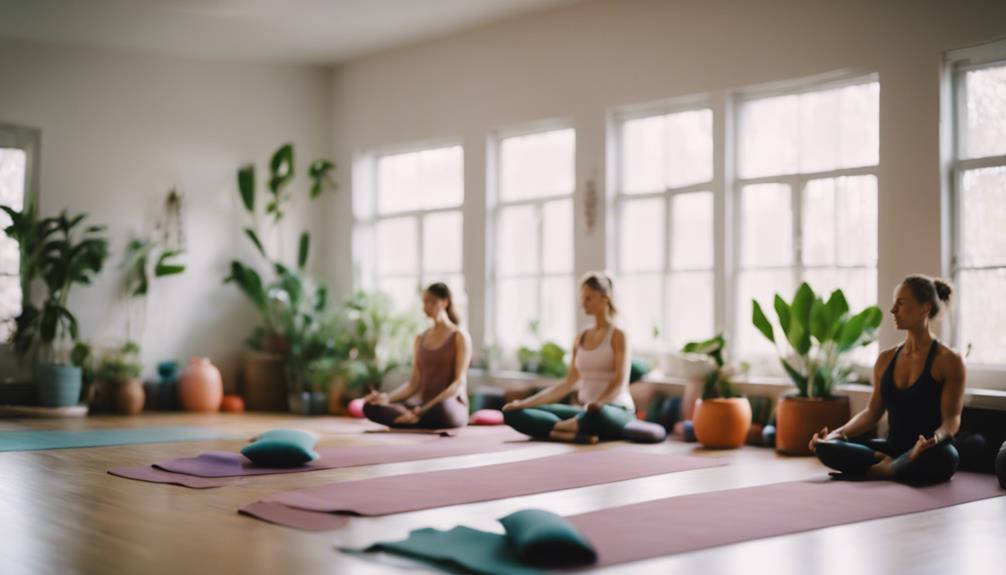Can You Do Yoga On Carpet

Yoga is a transformative practice that can be done almost anywhere, but many people wonder, “Can you do yoga on carpet?” In this article, we will explore the benefits and challenges of practicing yoga on carpet, tips for a better experience, and some alternatives if you find carpet unsuitable for your practice. Whether you’re a seasoned yogi or a beginner, this guide is here to help you understand how to effectively practice yoga on carpet.
Understanding the Basics of Yoga on Carpet
Yoga, an ancient practice that promotes physical, mental, and spiritual well-being, can be adapted to various surfaces. One common question is whether practicing on carpet is beneficial. Carpets come with different textures, thicknesses, and materials, which can affect your yoga experience. While a hardwood floor or yoga mat may provide a more stable surface, many find that a carpet can offer a softer, more cushioned environment. The answer to “can you do yoga on carpet” is a resounding yes, but it’s essential to consider how the surface influences your practice.
The Advantages of Practicing Yoga on Carpet
Practicing yoga on carpet has several benefits. Firstly, the cushioning effect of carpet can reduce the strain on your joints, making it a comfortable option for those with sensitive knees or wrists. This is particularly valuable during poses that require kneeling or lying down, such as Child’s Pose or Savasana. Additionally, the textured surface of carpet can provide some grip, which may help prevent slips during certain poses, especially if your feet tend to slide on smoother surfaces. Moreover, practicing yoga on carpet can create a cozy, home-like environment that encourages relaxation and mindfulness.
Challenges of Doing Yoga on Carpet
While there are benefits, practicing yoga on carpet also presents some challenges. One significant issue is the lack of stability. The soft fibers of a carpet can make it harder to maintain balance in poses like Tree Pose or Warrior III. Additionally, the uneven surface can hinder your alignment and make it difficult to execute certain movements correctly. If the carpet is too thick or plush, it may absorb your movements, which can be disorienting. It’s crucial to be aware of these challenges and adjust your practice accordingly to avoid injury.
Related Posts:
Choosing the Right Type of Carpet for Yoga
If you decide to practice yoga on carpet, consider the type of carpet you have. A low-pile carpet is generally more suitable for yoga than a high-pile or shaggy one. Low-pile carpets provide a more stable surface, allowing for better balance and support in your poses. Additionally, synthetic fibers tend to offer more grip than natural fibers, which can enhance your stability during practice. If you have the option, choose a carpet that has a firmer texture and is not overly plush to ensure a safer and more effective yoga experience.
Tips for Practicing Yoga on Carpet
To optimize your yoga practice on carpet, consider these helpful tips. First, use a yoga mat on top of your carpet for added stability and grip. A mat can provide a more reliable surface and help define your practice area. Second, modify your poses to accommodate the surface. For instance, if you find balancing difficult, try using a wall or a sturdy piece of furniture for support. Third, focus on your alignment and core engagement to maintain stability. Remember to listen to your body and adjust your practice to suit your comfort level.
Alternative Surfaces for Yoga Practice
While practicing yoga on carpet is feasible, you may want to explore alternative surfaces that can enhance your experience. Hardwood floors, for instance, provide a firm and stable surface that is ideal for balance poses. If you have access to a yoga studio, the specially designed flooring can enhance your practice as well. If you prefer to practice at home, consider investing in a good-quality yoga mat designed for maximum grip and cushioning. Mats made from natural rubber or TPE (Thermoplastic Elastomer) are particularly popular for their eco-friendliness and performance.
How to Create a Yoga-Friendly Environment at Home
Creating a conducive environment for yoga at home is essential, whether you practice on carpet or another surface. Start by ensuring your space is free from distractions. Choose a quiet area where you can focus on your practice. Consider adding elements that promote relaxation, such as soft lighting, calming scents, or soothing music. Additionally, keep your yoga area tidy and organized, making it easier to roll out your mat or find your favorite props. A dedicated space can enhance your motivation and overall enjoyment of your yoga practice.
Conclusion: Embracing Your Yoga Journey on Carpet
In conclusion, the answer to the question “can you do yoga on carpet?” is yes, but with some considerations. Practicing yoga on carpet can be comfortable and enjoyable if you choose the right type of carpet, take precautions to ensure stability, and create a supportive environment. Remember to listen to your body and make adjustments as needed to find what works best for you. Whether you’re at home on your carpet or at a local studio, the most important thing is to embrace your yoga journey and enjoy the benefits it brings to your mind and body. Happy practicing!What To Bring For Hot YogaHot Yoga StudioHow Yoga Changed My Life